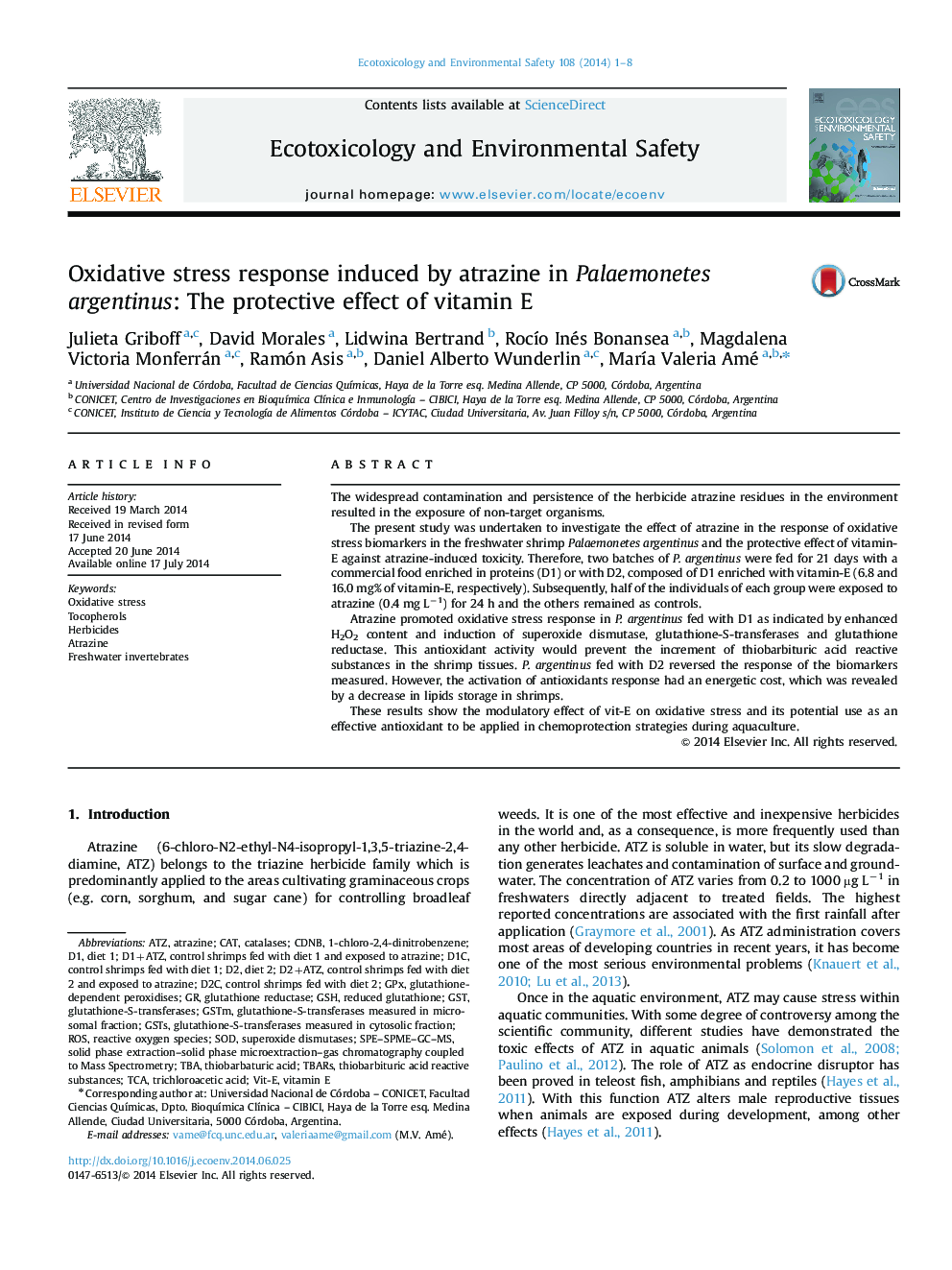| Article ID | Journal | Published Year | Pages | File Type |
|---|---|---|---|---|
| 4420111 | Ecotoxicology and Environmental Safety | 2014 | 8 Pages |
•Atrazine promotes oxidative stress response in Palaemonetes argentinus.•Supplemented diets with vitamin-E attenuated oxidative stress response in shrimps.•Antioxidant response to atrazine exposure has an energetic cost to shrimps.
The widespread contamination and persistence of the herbicide atrazine residues in the environment resulted in the exposure of non-target organisms.The present study was undertaken to investigate the effect of atrazine in the response of oxidative stress biomarkers in the freshwater shrimp Palaemonetes argentinus and the protective effect of vitamin-E against atrazine-induced toxicity. Therefore, two batches of P. argentinus were fed for 21 days with a commercial food enriched in proteins (D1) or with D2, composed of D1 enriched with vitamin-E (6.8 and 16.0 mg% of vitamin-E, respectively). Subsequently, half of the individuals of each group were exposed to atrazine (0.4 mg L−1) for 24 h and the others remained as controls.Atrazine promoted oxidative stress response in P. argentinus fed with D1 as indicated by enhanced H2O2 content and induction of superoxide dismutase, glutathione-S-transferases and glutathione reductase. This antioxidant activity would prevent the increment of thiobarbituric acid reactive substances in the shrimp tissues. P. argentinus fed with D2 reversed the response of the biomarkers measured. However, the activation of antioxidants response had an energetic cost, which was revealed by a decrease in lipids storage in shrimps.These results show the modulatory effect of vit-E on oxidative stress and its potential use as an effective antioxidant to be applied in chemoprotection strategies during aquaculture.
Graphical abstractFigure optionsDownload full-size imageDownload as PowerPoint slide
